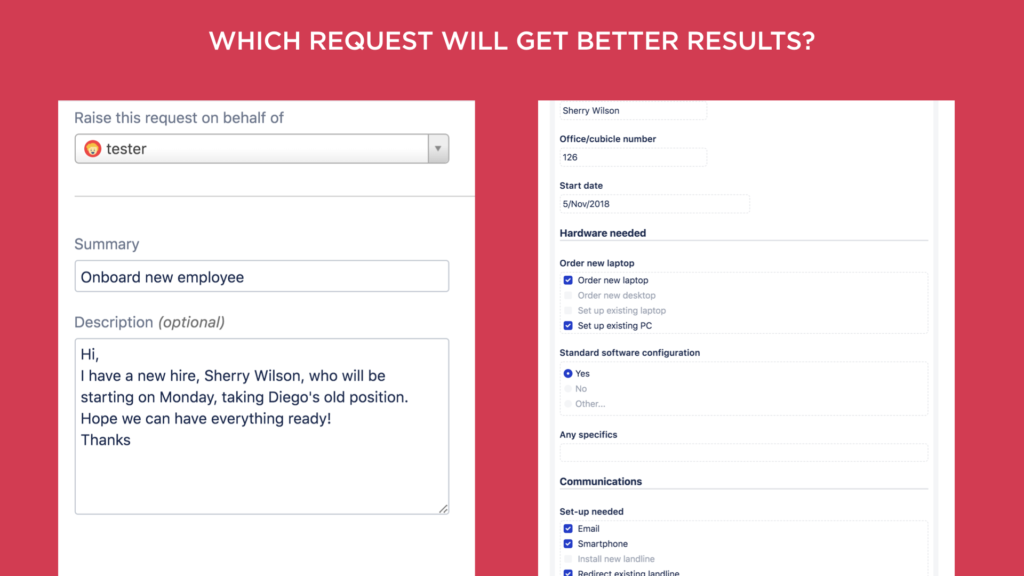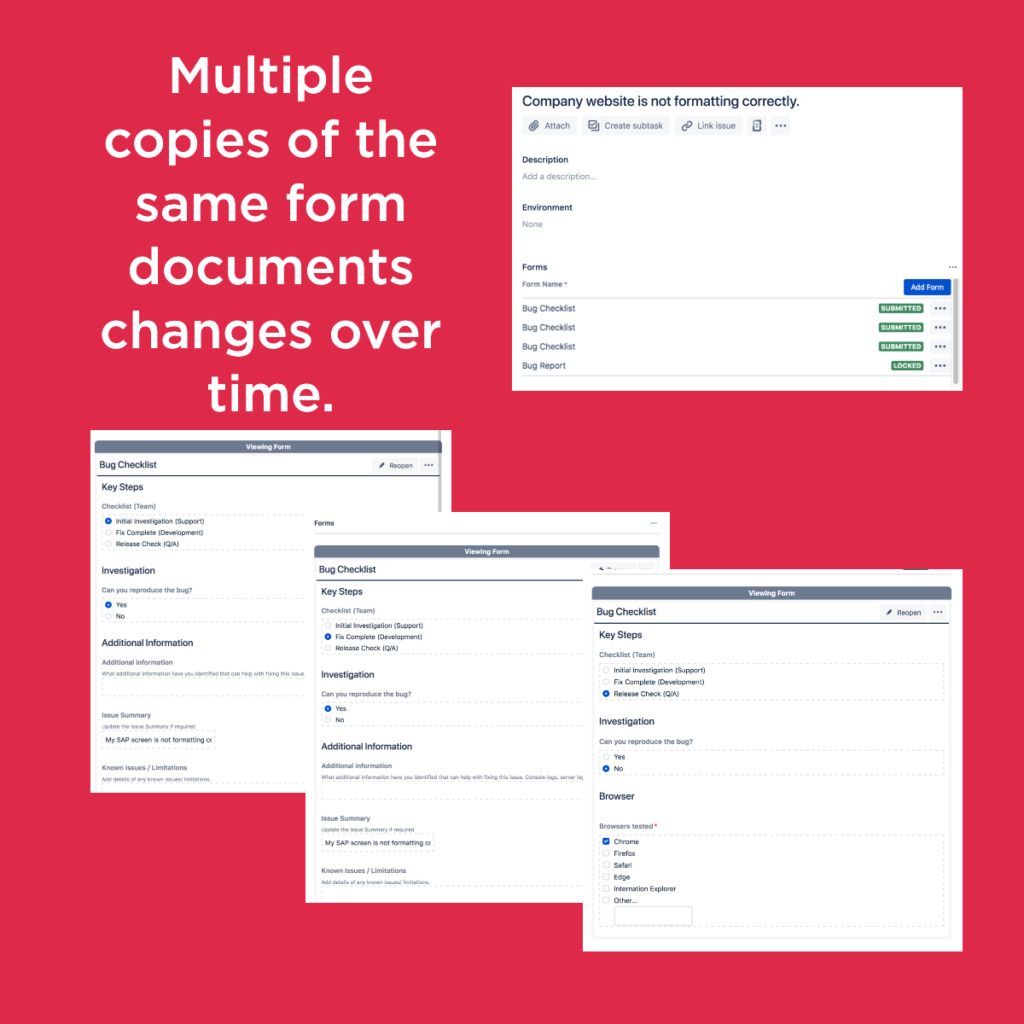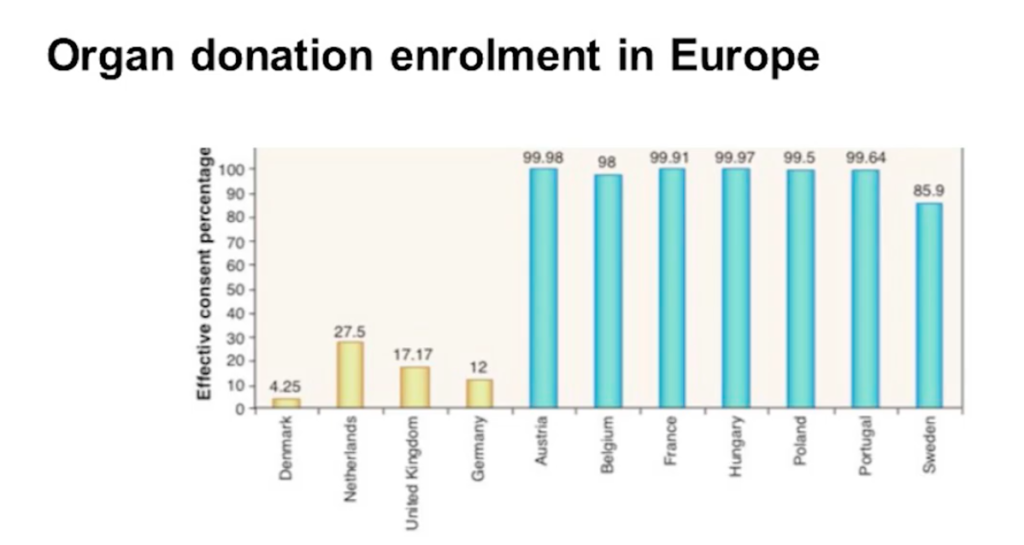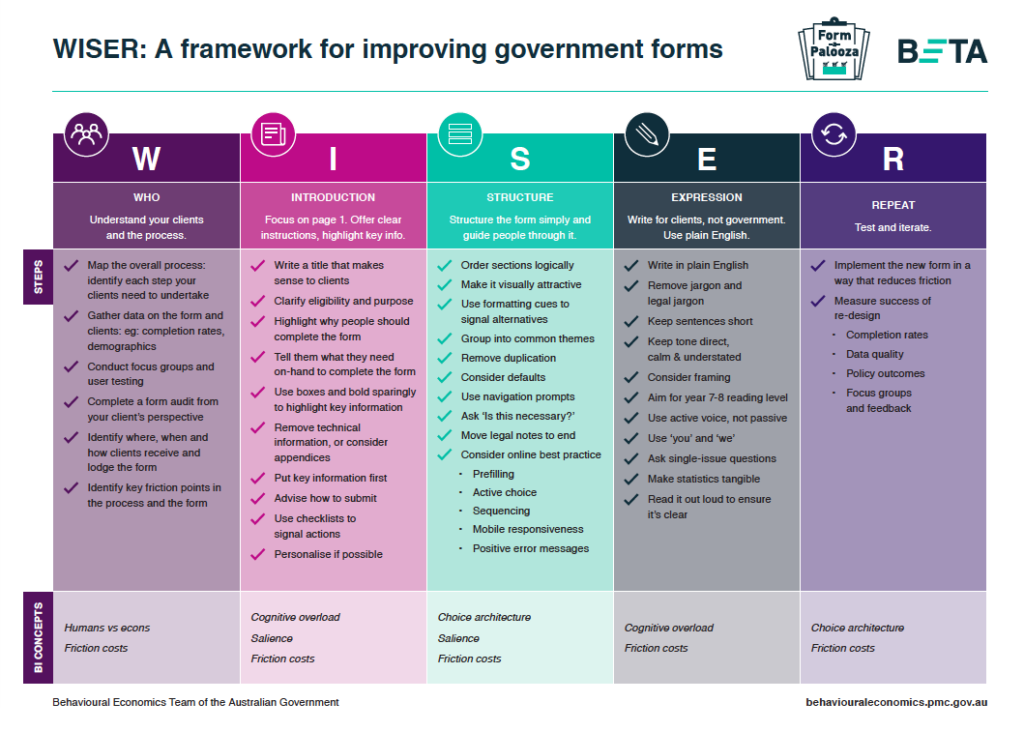Let’s just admit it. Forms aren’t sexy. They aren’t exciting or innovative. Few people would call them fun. They are, however, important and few business tools have proven to be as enduring.
The move from paper to electronic forms, and then to online forms solved a lot of problems. We no longer have to contend with illegible hand-writing and necessary fields that were left blank. But the advent of online forms also presents a challenge. How can we best use the tools we have – validation, conditional logic, auto-formatting – to truly optimize our forms so that teams get the information they need and users have a painless, possibly even pleasant, experience?
Forms and screens that serve as electronic forms (I’ll be using the terms forms and screens interchangeably) are more than just vehicles for data collection. They are the first step that gets the ball rolling on most business processes. They are also one of the primary ways we interact with our internal and external customers. And they are a mechanism for influencing (whether we want to or not) human behavior. Combining forms with a powerful workflow engine like Jira is a great way to get work done. Ensure that your Jira forms are well-designed and you’ll do more than get work done. You’ll save resources, improve relationships and influence user actions in the right direction.
Your Jira Forms Drive Data Quality
We create forms for collecting data, and the quality of the form will go along way towards determining the quality of the data. With the creation of every issue type and every request type, you are making decisions – which fields to include on which screens, what order to list the fields in, what justifies the creation of a new custom field – that will impact the quality of data you receive. In turn, getting better data will allow you to:
- Provide better, faster service – Imagine if all of your Jira Service Desk agents could provide one-touch service, receiving all of the information they need on the initial request and responding to the customer to let them know that issue has been resolved. There’s no going back and forth to collect the missing pieces. No digging through comment chains, no trying to parse out multiple data points that have been lumped together in a description field – all of the needed data is there, where agents can find it. Requests move through the queue faster, pleasing customers and allowing agents to focus on higher value work.

- Refine your processes – We often create our processes to accommodate the limitations of what we know or what our software can do. Jira is super flexible, but configuration can become complex. Using well-designed forms that embed in Jira issues allows you to reduce the number of issue types (the work of capturing specific pieces of data is shifted from the issue to the form), simplify workflows (use checklists instead of additional statuses or subtasks) and prune back that jungle of Jira custom fields. Your Jira instance becomes less complex, and your Jira administrator less burdened. Shifting from custom fields to form fields will also improve Jira performance.
- In JSD, being able to easily create portal forms tailored to capture the information needed for each request type allows you to better organize your queues, channeling work to the agent best equipped to handle the request.
- Enhance Compliance – Forms can serve as a record, capturing and preserving data from different sources, at different points in time, enhancing compliance and accountability. A well-designed form will make it easy to provide management with useful reports, and auditors with the information they need. Adding multiple copies of a well-designed form to a Jira issue allows you to see not only the current state of an issue, but also the discoveries that have been made along the way.

- Improve the Bottom Line – What is the cost of bad data? How much time do service agents, Jira users and customers loose searching for information that’s hard to find, invalid or missing? Include a field to capture a document version number on a form and the agent can glean the data at a glance. Obtaining the same information through a comment can cost hours, as the request sits, waiting for the customer to come back with needed data. Later, when the agent goes to retrieve the information combing through a comment chain can be like going down a rabbit hole. Better forms lead to better productivity.
Forms are the Basis of Relationships
A form can be the start of a beautiful friendship. Or not. When you consider how many business processes start with a user filling a form, it’s amazing that more attention isn’t given to form design as part of managing customer relations.
Most business processes start with a form. That means that the form is often your one and only chance to make a first impression. In some cases, government bureaucracies come to mind, a form or forms may be the only way customers interact with an organization. If the forms are bad, the relationship won’t be good. Bad forms can result in users postponing, abandoning and sometimes bypassing key processes.
On the other hand, well-designed, intuitive, user-friendly forms can reduce friction, build rapport and help set appropriate expectations. The improved service that results from good data collection will inspire confidence. Your forms build your reputation and promote your brand.
Form Design Influences Behavior
How we design our forms – the words we choose, the presence or absence of default values, the order of choice options – influence users decisions. If that sounds far fetched consider the image below illustrating organ donation enrollment in Europe.

Source: Why BI?
The stark difference between the rates for the countries listed on the left and those listed on the right isn’t due to culture or religion. It’s the difference between opting in and opting out. Want to increase employee participation your retirement contribution program? Change the form? Want to see more customers opt for a higher value product? Change the form.
We’ll be discussing how you can use wording, question framing, defaults and choice architecture to influence user choices in a future article. And if you’re thinking, “Wait, that’s manipulative. I don’t want to do that,” we’ll also discuss how you can mitigate the influence of your questions on users choices (though it’s not possible to be 100% neutral).
Where Do We Go From Here?
Once you’re convinced that form design matters, what’s the next step? Start by reframing how you think about the form process.
The Behavioral Economics Team of the Australian Government recently introduced the WISER framework for form design. It lays out specific steps to go through in identifying the form’s audience, providing appropriate instructions, using a clear layout, etc.

There are two big things you should notice about the WISER framework. First, the framework focuses on the user’s point of view. Who are the users? Why should they complete the form? What information will they need? What language will they understand?
Second, the framework tells us to test and repeat. You wouldn’t adopt a “set it and forget it” attitude towards developing software, so don’t do that with your forms either. Form design needs to be iterative.
Keep those things in mind as we move forward. Over the next few weeks, we’ll be taking a deep dive into form design, discussing the details of form layout, good questions, and things to think about form-wise when you bring an existing process into Jira for the first time. Then we’ll bring in our friend and Jira super-user, Rachel Wright, to discuss how you can apply these concepts in Jira.
Keep an eye out for the upcoming articles in the series:
- Why Form Design in Jira Matters – How you design your forms will impact the quality of data you receive, and much more!
- Layout and Flow: Creating User-Friendly Forms in Jira – Form layout affects completion rates and user frustration. We’ll discuss the right way to do it.
- Writing Good Form Questions in Jira: Part 1 – How do you choose the right words, field types and validation levels? This article will dig into the nitty gritty of creating good form questions.
- Writing Good Form Questions in Jira: Part 2 – Choice questions are great for collecting structured data. We’ll look at the options for choice questions and discuss ways to influence, or mitigated influence on the user.
- Things to think about when converting forms in Jira – Bringing a process into Jira for the first time? Don’t just copy forms straight across. This is a chance to make improvements.
- Efficient Jira Screens and Jira Service Desk Request Forms – Jira screens and JSD request forms aren’t the same. Here’s how you can make each one work for its audience.
- Tips for Creating good forms/screens in Jira – Learn how you can leverage Jira features like tabs, workflow transitions and icons to create better forms and screens.

Pingback: Better Form Design in Jira (Series) - Strategy for Jira®
Pingback: Good Form Questions in Jira: Part 2 - Choice Questions & Conditional Logic - Strategy for Jira®
Pingback: Tips for Creating Good Jira Forms and Screens - Strategy for Jira®